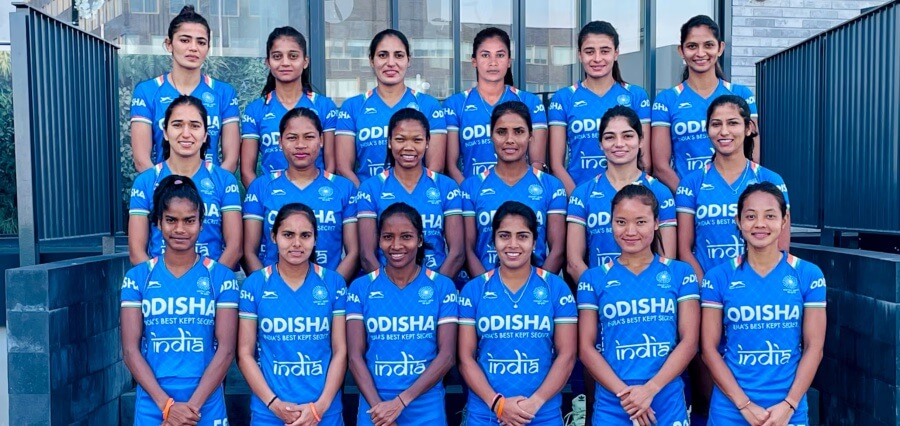Litigation is a challenging domain; there is no denying it. But is it especially challenging for women in India? And why? Is it really that women aren’t as tough as men, or is that a myth?
As a woman with 15+ years of experience in litigation, I can say with confidence, it’s definitely a myth!
The initial years of my journey weren’t easy. Over the years, I have seen the canvas change, and the field is certainly making more of an effort to be more inclusive, women-friendly (or, shall we say, gender-neutral) and humane. However, we still have a long way to go.
In 2022, India Today quoted the Hon’ble Justice Pratibha M Singh, Judge, Delhi High Court, that only 15% of bar council enrolled lawyers in India are women. Hon’ble Justice Singh lamented this “huge disparity” in gender representation in the legal profession and attributed it to the constraints women face at home. In January 2023, a study by Bar and Bench reported that a mere 2.04% of State Bar Council representatives in India are women. Law firms also typically face a higher attrition rate among women at the equity partner level.
The data begs a deep dive into the “why” of it all. And how do we change it?
But to look at the future, we probably need to start with the past.
Let’s start with the first Indian woman who practiced law in India: Cornelia Sorabji. Ms. Sorabji was the first woman to graduate from the Bombay University in 1888, and then she went on to qualify for the BCL exam at Oxford in 1892. But, the profession was not yet open to women! So, it was only after the First World War that she was officially awarded the degree. While she never actually made it to arguing in court, she made a deep impact on the canvas of “Women in Law” through her relentless championing of oppressed women. Sources say that the ones who helped her find her feet, were other strong women like Mary Hobhouse, Adelaide Manning & Florence Nightingale. There’s some poetic justice in that, wouldn’t you say?
The appointment of Hon’ble Justice M. Fathima Beevi as the first lady judge of the Supreme Court of India in 1989 is perhaps the next landmark moment we should focus on. Encouraged by her father, she carved a trailblazing path for herself in the field of litigation, starting as a practicing lawyer in Kerala, and then moving to the judiciary. One wonders, would her path have been the same had she not been blessed with her father’s unwavering support?
To my mind, the greatest challenges that women face in pursuing litigation as a viable career option come from external sources. Not all women are blessed with understanding families – families who don’t blink twice when the man of the house spends long hours at work, frown on the woman for doing the exact same thing. She is crucified for “neglecting the family for selfish ambitions”. It doesn’t get any better at the workplace. Instead of finding ways to help women excel, too often we come across bosses who scoff at maternal duties hampering work. Gender bias, stereotypes, lack of female representation in leadership roles – each of them play a small part in adding to the problem. Combine it all, and together they become an insurmountable juggernaut, standing in the way of us succeeding in the profession.
Litigation as a profession is undoubtedly time consuming. Court appearances start at 10am, and go on till 4pm on average days. After that starts the preparations for the next day’s cases, meeting clients, meeting associates and co-counsels… the list goes on. A typical litigating lawyer can often find herself in office till 1am! Compensation is also a pain point – we often find ourselves working for literal peanuts, especially in the beginning of our careers.
What we need to ask ourselves as well as the profession in general is, is this model of working really the best? Why is it that women often excel as in-house counsels far more than in litigation?
The answer is really, ridiculously simple. Everyone has only 24 hours in a day, and while men can get away with spending 18 of them away from home, fact is, women still can’t. Balancing professional and personal life can therefore become extremely challenging, leading to women choosing easier, more structured career options.
For this to change, I feel there have to be two radical shifts in mindsets, and a few logistical initiatives. First, we need to change the thought process that it’s okay for men to spend 18 hours a day at work. It really is not! For one, that’s a really ridiculous work-life balance, and more importantly, it sets unreasonable standards for women. Well, in fact, for everyone really. Even a man who would rather not work 18 hours a day finds himself “falling behind” in the profession in comparison to those who don’t have any such compunctions. The second radical mindset shift is on the assumption that it is a woman’s job to mind the house. It isn’t. If a woman chooses to prioritise her career over cooking dinner, she’s just as entitled to understanding, compassion and support as a man.
On to the logistical initiatives and support then.
Don’t undermine the women in your team! Nurture their talent, judge their productivity by the quality of the work that they do, not by the hours they spend in the office. Take a compassionate approach in assessing performance, recognize individual strengths and support professional growth. Pioneer initiatives that not only encourage your leadership to adopt inclusive and compassionate leadership styles, but also encourage women to take on prominent leadership roles within the organization. Ensure that the women in your team aren’t at a disadvantage in terms of compensation. Speaking of, don’t make your team work for peanuts, period! It might be a good idea to regularly review your organisation’s salary structures to identify and rectify any gender-based pay gaps. Make a genuine effort to acknowledge and recognize the additional responsibilities and unpaid labor often shouldered by the women in your team. Ensure that their contributions beyond formal job roles, such as mentorship and community involvement, are valued and acknowledged.
Promote a compassionate, flexible work schedule for your team. Offer everyone in your team/firm a healthy work-life balance, not just the women, because they’re all human beings who deserve to have a life outside of work. Support your team, especially the women, in balancing their professional and personal responsibilities.
Usually, a person’s quality of work doesn’t depend on whether they are sitting in a cubicle next to you or on their bed, and as long as that remains unchanged, why do you need to see them in office anyway? There is ample research to show that working remotely and having flexible hours enhances work-life balance, and well-rested and fulfilled individuals are far more likely to be productive and successful in their careers than burnt-out, frustrated ones.
Does it make sense then to cling to traditional workplace hours and expectations? Isn’t it better to take advantage of technology and focus on better productivity instead? A cultural shift that supports the integration of work and personal life for both men and women and promotes a family-friendly atmosphere within litigation firms is crucial. Given that even our courts have implemented virtual hearings and are acknowledging the benefits of remote work, should you really be falling behind?
Promote awareness and understanding of mental health issues and their impact on professional life. Establishing support systems and resources for mental well-being, including counseling services and stress management programs, will foster an empathetic workplace and reduce attrition. By infusing compassion into workplace policies, leadership practices and cultural norms within the litigation industry in India, it becomes possible to create an environment where women feel supported, valued and empowered to thrive in their professional endeavors. Compassion not only contributes to individual well-being but also strengthens the overall fabric of the legal community.
Make a conscious effort to diversify your team and create a more inclusive environment. Implement initiatives that empower the women in your team, such as workshops, skill-building programs and leadership training. A workplace culture that values collaboration, mentorship, open communication and an empathetic approach towards women navigating the demands of both their professional and personal lives, is one that will win you cases, believe it or not! While we are on the topic, stop shunning women who took a break from their legal careers for family, maternity or whatever other reasons. They may be rusty, but they are certainly not worthless. By providing support and opportunities for a smooth return to the profession, may be through targeted mentorship and skill-refresh programs, the practice will gain a dedicated resource who will be much less likely to leave.
Implement a safe, inclusive, women-friendly workplace. It is heartening to note that many firms these days are taking bold steps like providing menstruation leave, implementing family support policies like paternity leave, extended maternity leave, and organizing on-site childcare facilities for parents returning to work. This trend of moving beyond providing the bare minimum workplace benefits needs to percolate deeper into the litigation industry. Also important are robust policies for protection against sexual harassment and discrimination, with built in confidential reporting mechanisms and swift, fair resolution for any complainant. Zero-tolerance towards any form of harassment and support systems for those who experience harassment are essential to any workplace.
Invest in developing the women in your team. Facilitate networking events that connect the women in your team with mentors, peers and industry leaders. Encourage participation in legal conferences and seminars to expand professional networks. Fostering a sense of community among women in litigation through networking events, mentorship programs and affinity groups has a positive and encouraging effect. If you are a woman in litigation yourself, take it upon yourself to mentor younger women in the profession. Remember, what Ms. Nightingale and Ms. Hobhouse did for Ms. Sorabji left a lasting impact on the pages of history. You can make your own – may be contribute to promoting accessibility to legal education for women, consider starting or contributing to scholarships and mentorship programs for aspiring female lawyers.
Bottom-line: the success of women in litigation doesn’t only depend on the women. It relies heavily on you not writing off the contribution of the women in your team, just because in your mind the fact that they have to go home early to cook for their kids, is a drawback. It really isn’t. It banks fundamentally on them getting the right opportunities and platforms, the ability to realistically balance the professional and personal commitments without being penalized for their choices, and without having to sacrifice one over the other. It depends profoundly on us, the existing women in litigation, creating a supportive space for younger women aspiring to follow a career in litigation, where they can learn from the challenges and experiences we face while practicing.
It is a fact that women will, more often than not, surprise you with their strength. Let us initiate more of these open conversations and stoke that fire in them. Let us, together, help harness that strength.
Stay strong, ladies!
– SC&A Legal





